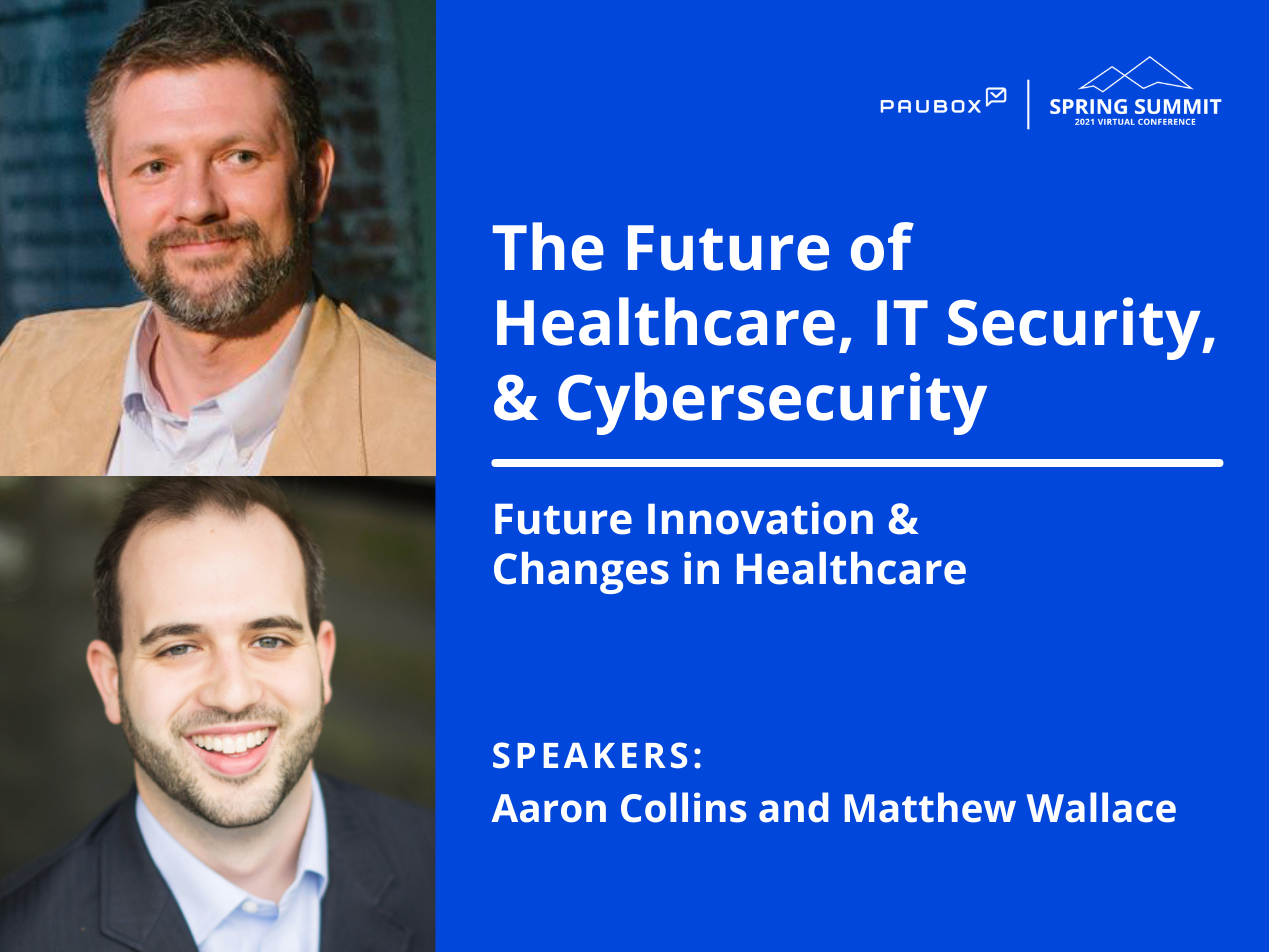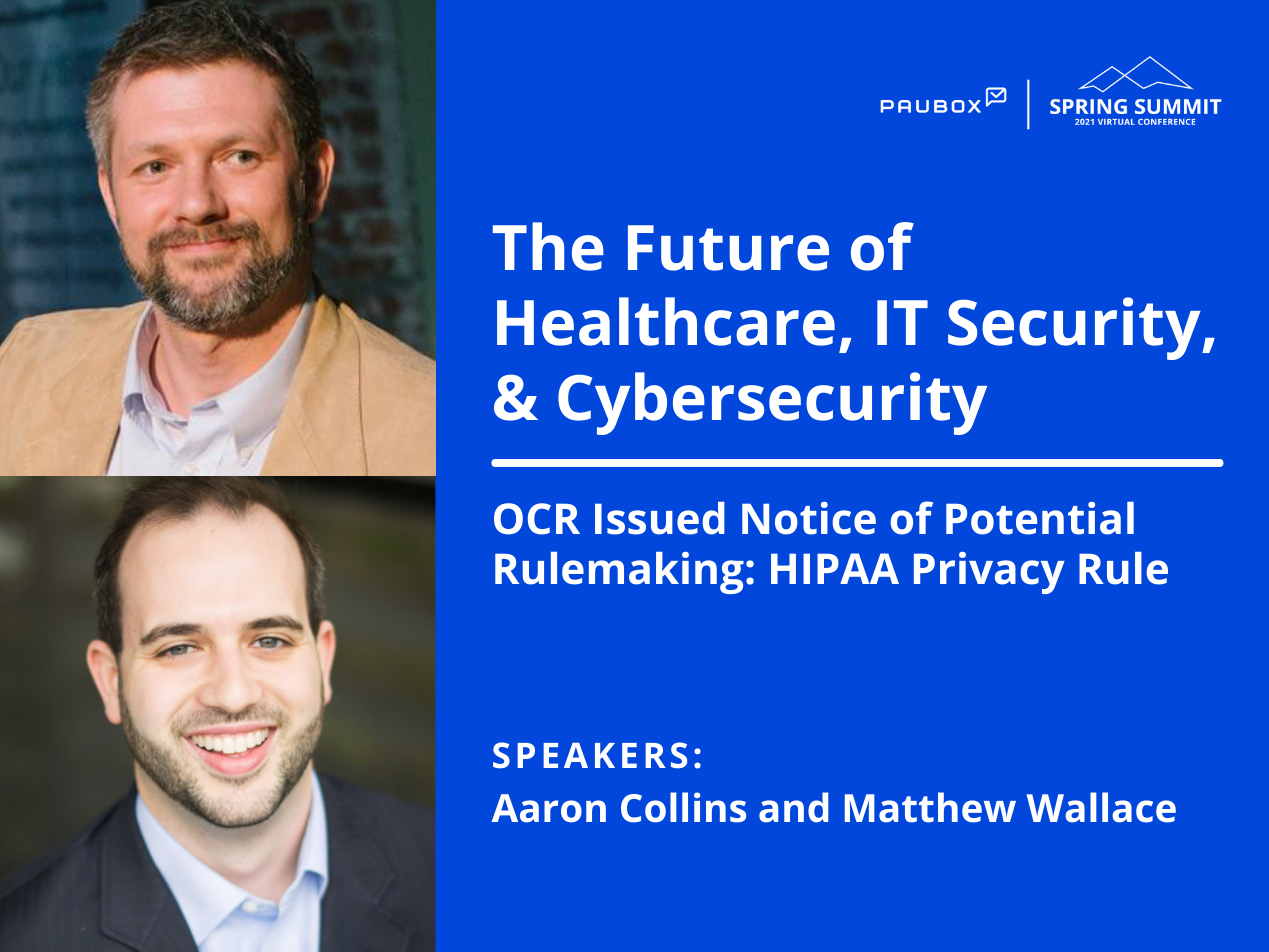5 min read
Aaron Collins and Matthew Wallace: Future innovation & changes in healthcare
Hannah Trum April 07, 2021

Matthew Wallace: We have rolled out a signature in one of our major programs, because our funder, which is the state allowed us to do that. And the other major program right now, the state still says we need a wet signature that we were able to use verbal signatures, which asked me how that works, I’m not quite sure, for part of the pandemic understanding need to discontinue to offer services.
And even that interesting enough in state law, state law is very clear that it used to ensure in Louisiana is just as valid as a wet signature, we’re hoping to continue to see that. I think beyond that, hopefully, we’ll continue to see a movement towards value-based purchasing value-based care, and pay for performance and outcomes. What I’ll tell you from my prior work, where we looked at pay for performance and social impact bonds, the key there is to tie that when you tie the payment, you tie it to a very specific outcome, the data is absolutely the most important piece and how you’re going to track and measure the change in the outcome from point A to point B, which will absolutely 100% rely on our medical record systems, our data systems, etc.
And so making sure that we have accurate pieces of information that are safe and secure, and accessible and mindful, will really hopefully be the future of our healthcare systems because we’re not going to see a decrease in cost and an improvement of care until we tie the outcome and the payment stream together. Right now, you show up with a list of symptoms today, your doctor is going to get paid. And if you show up two weeks later, with the same set of symptoms, you’re going to get paid again until that second payment is not tied to the outcome of the first or the outcomes are not together, we won’t see any real movement in our systems. Not all of that will require a major IT infrastructure and lift for sure.
Aaron Collins: I definitely think moving forward and the 10 years. Next 10 years, telehealth is probably going to make a big, big jump and advancement, especially in the rural communities here in the Ozarks. I just see this being a good thing for everybody all around. Previous previously, the state of Missouri had been doing some work towards telehealth that wasn’t necessarily all that aggressive is maybe other states like West Virginia, for instance, had really really good structures in place. But since the pandemic, there’s been a lot of forwarding movement in that direction. And I see this being something that carries on the future.
Matthew Wallace: I know Ochsner health systems here in Louisiana as one of the innovators in the telehealth space, they even have a kit you can get which is manufactured by a national organization where you can, you know, take your blood pressure at home and it’ll link into the system you can they got a scope you can put in your ear, and then your nose and your mouth and then it will broadcast that live to your doctor.
And it really you’ll see us a range of these types of telehealth and intervention. remote monitoring is kind of the catch-all term that sounds will big, big brother but sometimes it’s as simple as you self track things and text them into where you have a wearable. And of course, all of those things will be connected to the Internet of Things, which I imagine will provide some opportunities for bad actors to try to hack and gather information on. So I think Tella the idea of telehealth will evolve from phone calls to video to using some at-home devices to transmit information.
Jenn Pantle: What percentage do you guys think in the future telehealth will play as opposed to the in-person visit? Do you think that the only thing adapted in general on a big basis? Or do you feel like once we were all at our normal again, that we’ll just go back to going into the office?
Aaron Collins: That’s kind of a, I guess my answer would be two parts. Because it’s really gonna boil down to the percentage of individuals you serve that are in these remote rural areas where this is going to be a big benefit. And it’s also if you wanted to move forward past that, it would probably have to do with what the percentages are when it comes down to billing.
Matthew Wallace: So yeah, I just kind of made a couple of quick notes that you know, there’s the idea around access, which you’re absolutely correct in our rule.
Populations will be key where they don’t have a lot of specialists or doctors to be able to access some of that interim care I have a lot of Doc’s that I work with that are hyper specialists and they say you know that the time and the intervention they need is between the ears and the sense of you need you need them for their mind and their time to be thinking rather than necessarily doing a physical examination for Whatever their specialty might be, and so they’re definitely a high user or potential user for telehealth.
And to your point, Aaron, it’s going to be wherever the dollars flow right now, the interesting part of the pandemic was that we just turned on the telehealth reimbursement structure is the same. So if you’re getting paid the same for telehealth intervention versus an in person, and you can do telehealth, boom, boom, boom, boom, boom, of course, health systems are going to want to do that. So it’ll be interesting to see if there’ll be some sort of push to try to regulate that down, like health systems will make that kind of between the ear argument that, for the most part, you weren’t necessarily paying me for that physical interaction.
Anyways, you were paying me for my expertise. Now there could cost me the argument that I was also paying you for the lights and, you know, the scalpel and the tongue depressor or whatever, maybe I’m not paying for that now. So I think there’ll be some sort of moderation in between, but I think the overlay that has the potential there’d be a real benefit, but also something that could be a slippery slope is that overlay of that health equity, which we’ve seen is to be so important.
So on the one hand, you really can provide an opportunity for underrepresented populations to access care, but do they have the technology that they need? How is the care being delivered in an equitable way through this virtual platform? And what benefits are we losing out on by not having that face to face interaction they are but also if you’ve got someone who’s going to have to take a bus three different places, and three different stops to get somewhere it’s a six-hour trip to see their primary care physician, but telehealth if we provide them with the tools that they need, could actually be a really great way to work towards more health equity.
Watch every minute of this session here.
Learn more about Paubox Spring Summit, Secure Communication During a Pandemic.
Read a full recap of Paubox Spring Summit.
About Aaron Collins Aaron Collins is the systems administrator for the Developmental Center of the Ozarks. He is well versed in the building and maintenance of HIPAA compliant environments, firewall administration, FileMaker databases, Mitel phone controllers, and network administration.
About Matthew Wallace Matthew Wallace is the vice president of strategic initiatives and partnerships at Easterseals Louisiana. He’s passionate about the health of all people; he believes that when people are healthy, communities are healthy and thrive. In his current role, Wallace oversees government affairs, development, and communications.
Learn more about these panelists.
Subscribe to Paubox Weekly
Every Friday we'll bring you the most important news from Paubox. Our aim is to make you smarter, faster.


